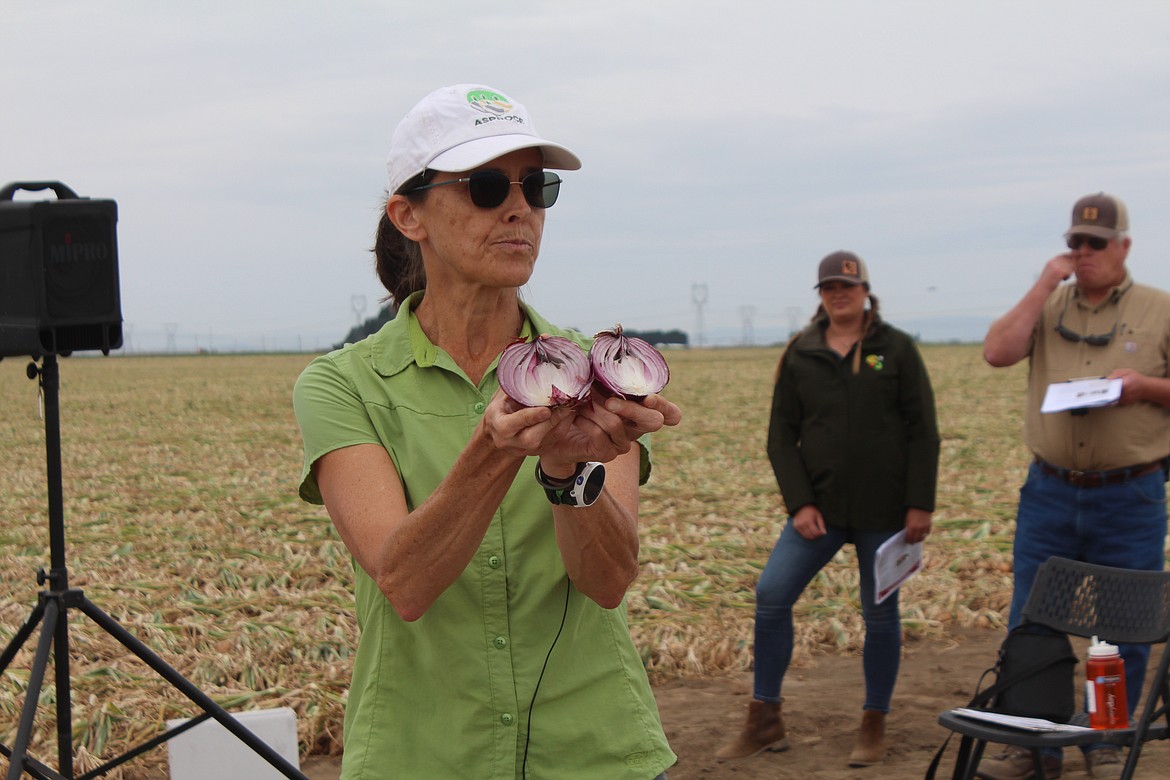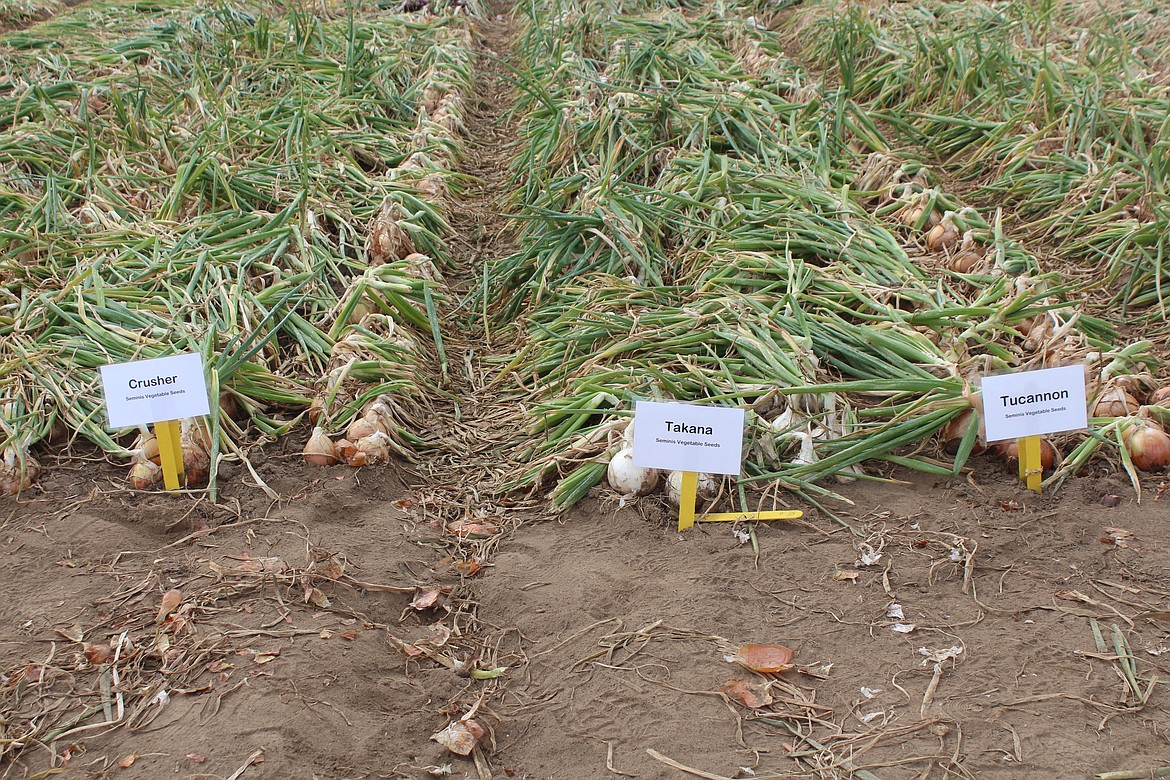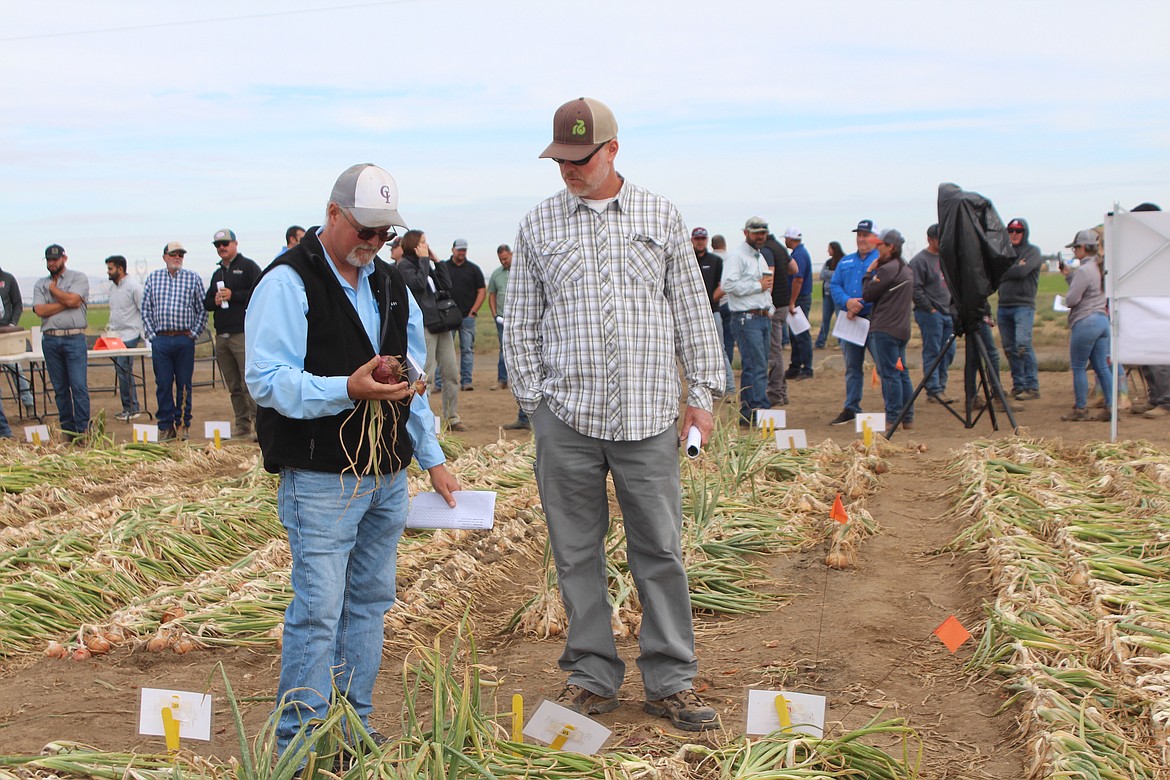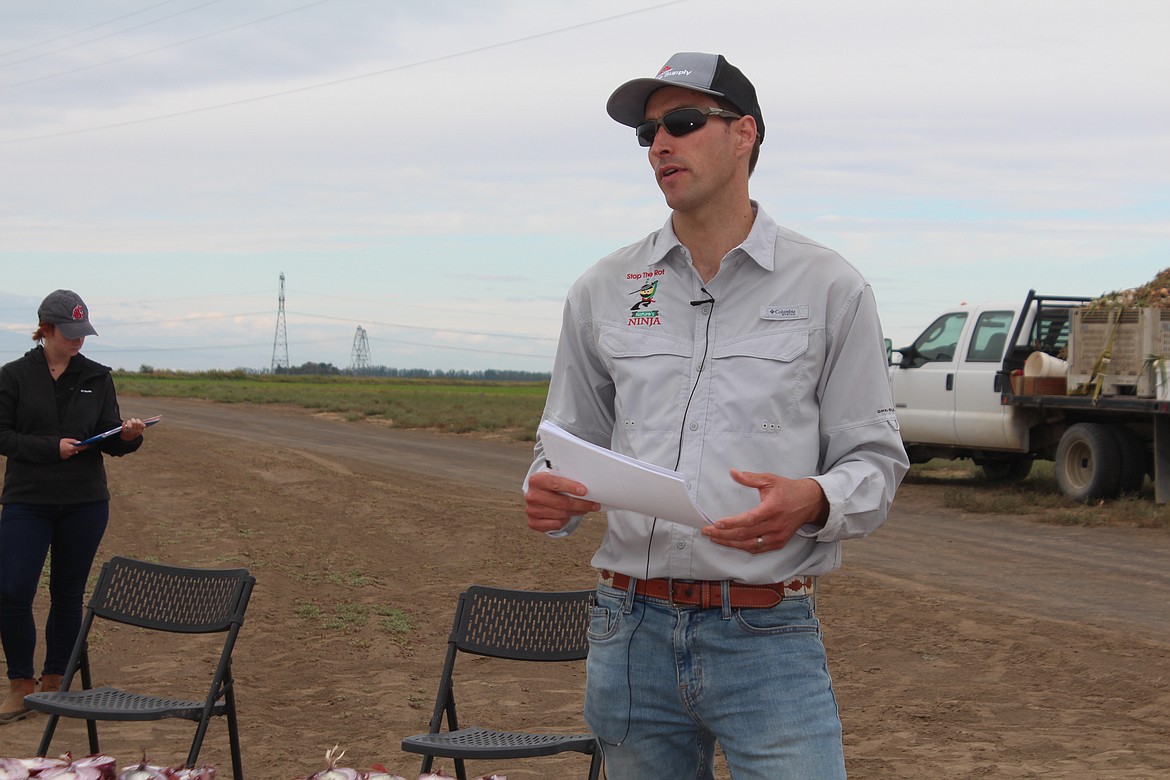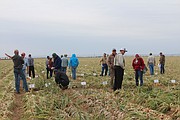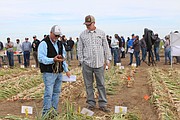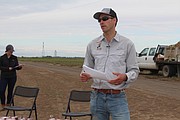Onion Field Day: Growers get chance to learn, network with experts
MOSES LAKE — The onion varietal trial in a field near Moses Lake is in the process of being harvested, but even once it’s in storage it’s still a work in progress. Like all farming, raising onions is a continual process of adjustment, which was highlighted during Onion Field Day Aug. 31.
Co-organizer Carrie Wohleb, WSU Grant-Adams County Extension, said scientists planted 52 different varieties of onions. Brian Haddon, one of the many industry professionals in attendance, said farmers and industry experts were examining the onions for quality as they came from the field.
“Basically, comparing maturity, shape and uniformity,” he said.
It isn’t just about those three factors though.
“But this is only one piece of the pie,” Haddon added. “It’s also about how they store.”
While it’s important that the onions look good coming out of the field in September, he said, it’s just as important that they look good coming out of storage in February.
Tim Waters, WSU Benton-Franklin Extension and field day co-organizer, said the goal of the field day was to give onion farmers information they could use.
“We’ve got most of the varieties that are grown in the Basin all out here in one field, so growers and industry members can come out and look at them side by side, and compare and contrast,” Waters said. “So it kind of helps growers decide if there are new varieties they might want to try, see what (those varieties) look like in the field.”
The WSU field day was one of two in the Pacific Northwest this week, the other in the Treasure Valley, which straddles the Snake River and the Oregon-Idaho border. Like Central Washington, it’s one of the most productive onion-growing areas in the United States.
“This is what is known as Onion Week in the Northwest,” Haddon said.
Dave Whitwood, Caldwell, Idaho, is a plant breeder who developed some of the varieties in the test plot. He wanted to evaluate the results in the field and said he liked what he saw.
“We have varieties that are going to work in this marketplace,” he said.
Like other commodities, onion farmers grow for different markets. A processor making onion rings needs different qualities than a retailer selling in the fresh market, Wohleb said.
“Some (farmers) are marketing to a smaller onion, some want larger onions. Different buyers want different things,” she said.
Buyers may – or may not – also need longevity, Wohleb said.
“Not every onion is intended to be stored for a long, long time,” she said.
The onions in the trial also will be evaluated for their resistance to disease while in storage, she said.
“We’ll have a report out in September on yield and size distribution. And then we’ll have a report out in February on storage qualities and defects,” Wohleb said.
Field Day attracted industry specialists in fertilizers and soil qualities, pest and disease management, crop insurance, among others.
“Talking to the people that we work with,” said Quinn Dreher who works for Miller Chemical.
The field day also featured WSU researchers updating participants on that research and on changes in the industry.
Rachel Bomberger of WSU reported on new Endangered Species Act compliance rules for pesticide application – well, more or less new.
“This change was put into effect in 2019,” she said.
Farmers will be required to check regulations for their specific product and their specific location. If the field overlaps with endangered species habitat, farmers will be required to make some changes in application, and they may not be able to use the product at all, she said.
The website set up by the EPA is not always user-friendly, she said, and not all the products registered for use in Washington have the new labels yet. Growers should be paying attention, and if they have questions they should talk to EPA compliance investigators. Farmers should use them as a resource rather than a regulator, she said.
Researcher Lindsey du Toit talked about four different studies she’s conducting, covering subjects from the optimum time to top onions (cutting the onion stem) to the effect of substantial swings in temperature on plant growth.
One of the four was prompted by abnormal growth in the onion stems, which researchers thought might be connected to the use of certain herbicides. While those herbicides could cause the damage, she said, in this case it was connected to a rapid shift from cold to hot weather in April. She also studied the effects of heat stress during a hot spell in August. She observed two different types of damage to onions related to the hot temperatures.
A third study concerned the best time to top the onions, which was determined to be after the stem had dried out. Residual moisture in the stem encourages bacteria growth, she said. Reducing water when applying chemicals to kill bacteria also makes them more effective, which was the conclusion of her last study.
Gabriel Lahue, a soil scientist with WSU, reported on the results of a study on the best method of irrigation to reduce bulb rot. Drip irrigation systems were determined to be more effective than sprinklers, such as a pivot system, for reducing rot. Researchers also determined that ending irrigation earlier helped reduce the potential for bulb rot.
Waters discussed the results of trials near Othello to determine the best time to apply pesticides to kill thrips.
“If you’re going to spend money on insecticides, your money is better spent early in the season,” he said.
Early application helps reduce thrips populations, and it’s very difficult, if not impossible, to control the spread once the insects have gained a foothold, he said.
Wohleb said it was the 38th year for cultivar trials.
“My predecessor started this. So it’s important enough to the onion industry here in Washington that it’s been supported and carried on for that long,” she said.
Cheryl Schweizer may be reached via email at cschweizer@columbiabasinherald.com.


